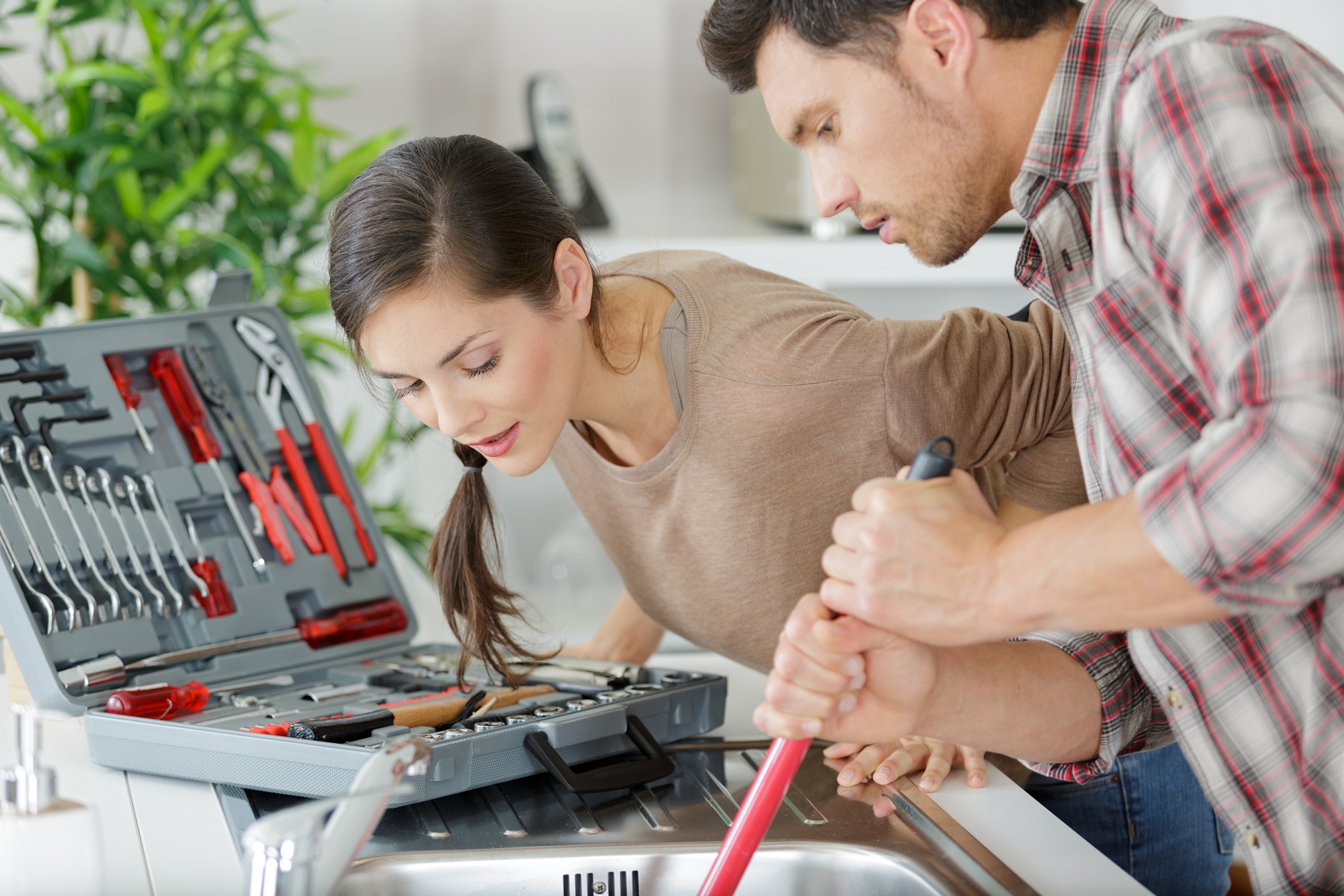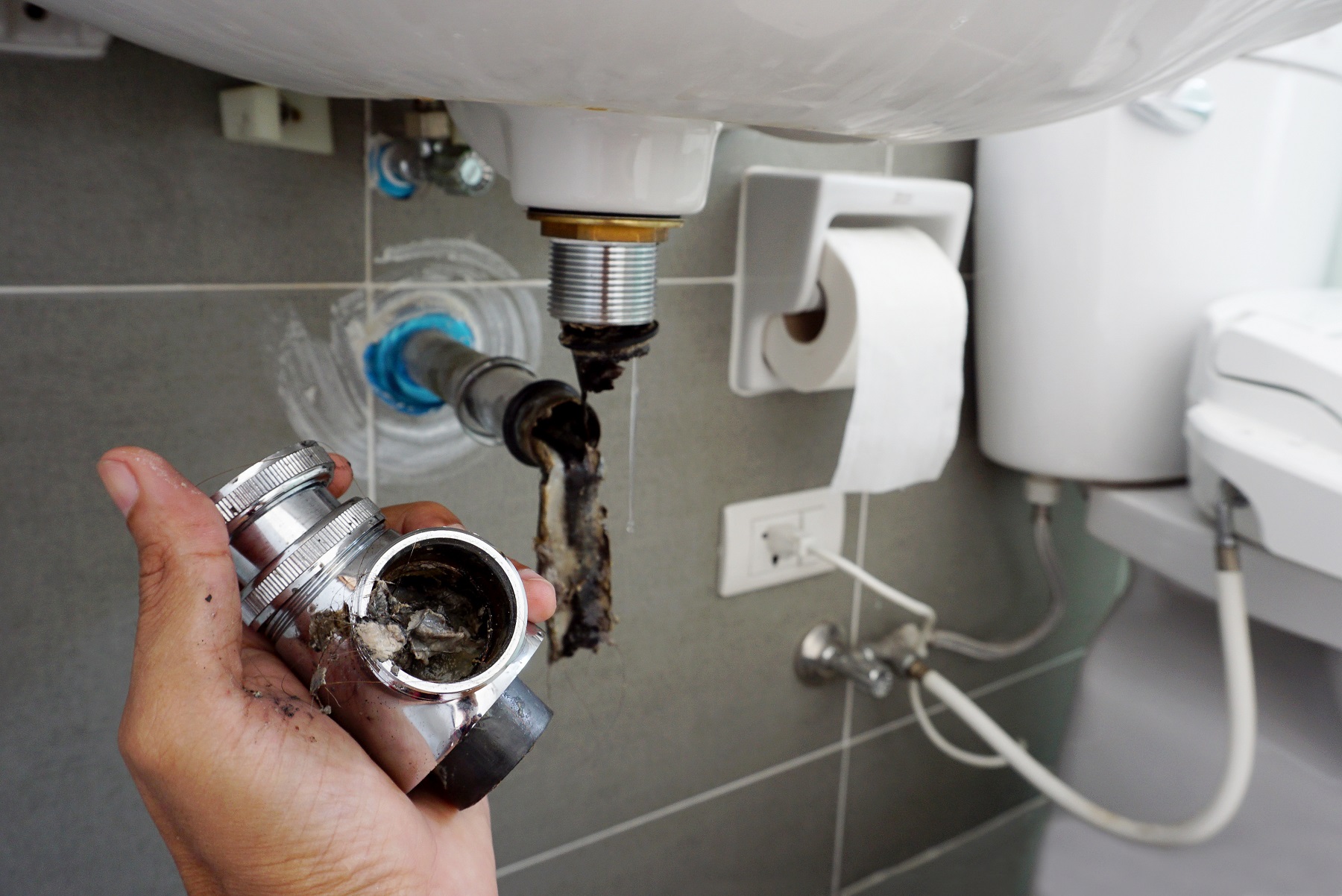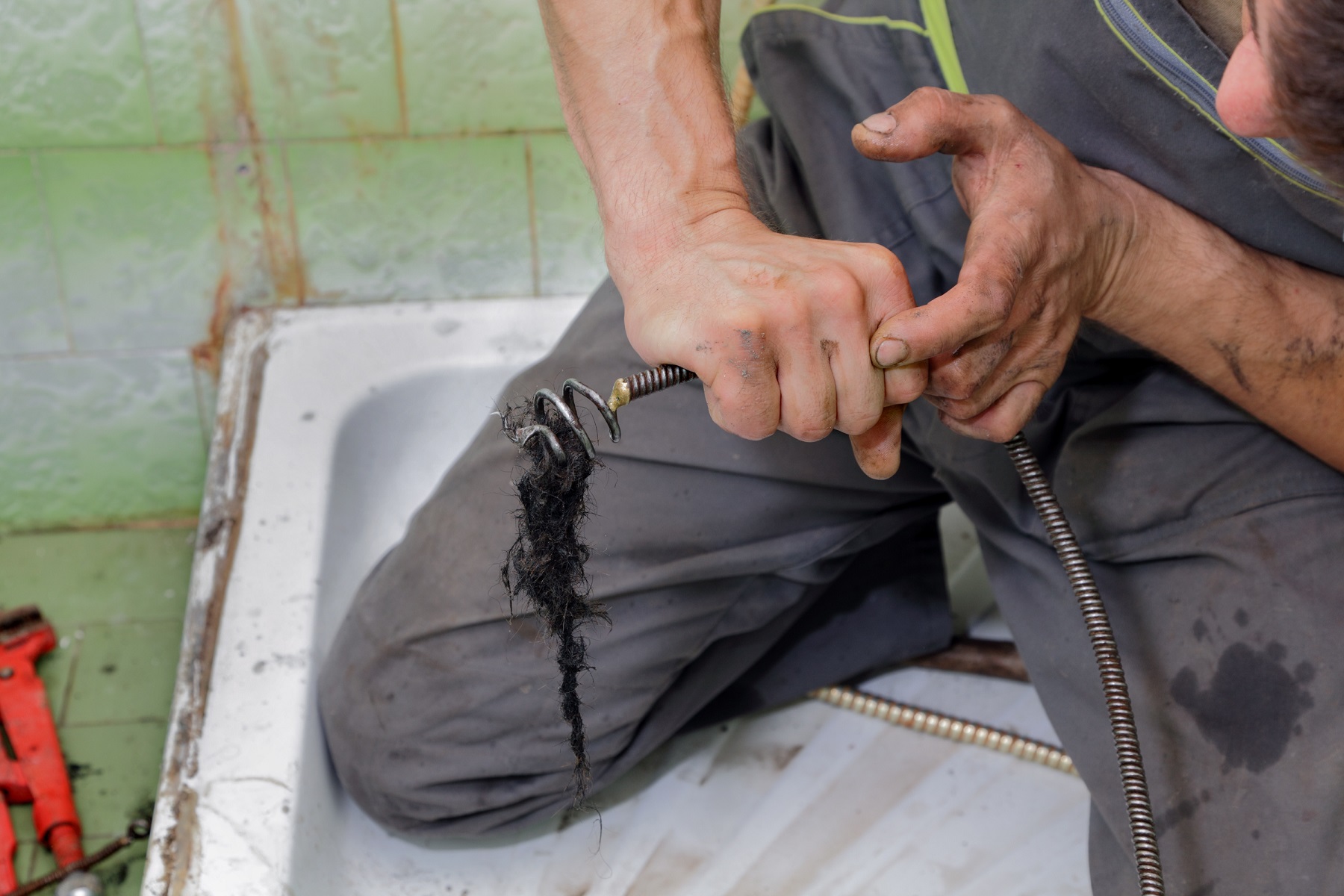Have a Clogged Drain? Learn How to Unclog It and When to Call a Professional
Clogged and slow-draining drains can be an annoyance because water is not going down the drain as it should. When it does finally drain away, it leaves soap, hair, toothpaste, and other unwanted grime. Before you pick up the phone and call a professional plumber, there are a few things you can try at home to see if you can unclog the drain yourself.
Sometimes the problem may not be a clogged drain but, rather, an air problem. There are often air vents on top of plumbing pipes next to your sinks. If the airflow is restricted and cannot move into the pipe as water goes down the drain, it can cause drains to drain slower and appear to be clogged.
Verify there is nothing around the air vent that would prohibit the airflow. If the vent is not blocked, then the problem is probably a clogged drain. Before you run out to your local retailer to by an off-the-shelf clog and drain-cleaning liquid, think again.
Every one of these products contains harsh chemicals that are not good for your home’s plumbing lines. If you ask any professional plumber, they will tell you the same thing: Don’t use store-bought liquid clog and drain cleaners. Besides potentially damaging your pipes, these products also do not address every type of clog.
Instead, you will want to gather up some essential plumbing tools to try to unclog the drain yourself, including:
- Plunger
- Rags
- Plumber’s Wrench
- Drain Snake
- Bucket
- Rubber Gloves
- Baking Soda
- Vinegar
Once you have everything you need, you are ready to attempt to remove the clog from the sink.

Step 1: Plunge the Sink
You will want to start by partially filling the sink with hot water if there is no standing water already in the sink. While you are waiting for the sink to fill, take your rag and plug the overflow opening at the top back of the sink.
For kitchen sinks, take the drain stopper and place it over the side you are not plunging. If there is a sink strainer over the drain, remove it before you start plunging.
Hold the plunger over the sink with one hand and, firmly holding the rag or drain stopper with the other, start plunging. You may want to ask someone to hold the rag or drain stopper for you so you can use both hands to plunge.
Start plunging the sink. You want to use quick up-and-down plunging motions to try to force the clog out. Check to see if the clogged drain has been cleared after about six to eight plunges. If not, continue plunging and try again.
Once the clog has been freed, remove the rag or drain stopper. Close the drain on the sink you just unclogged and fill it half-full of hot water, and then open the drain.
The water should drain away as normal. If it doesn’t, there could still be residue left on the pipes, which means the clog will eventually return.
Step 2: Remove the Drain Trap
If you have tried plunging and the clogged drain remains, your next step is to check the drain trap. There could be a big glob of hair, soap scum, grease, and other icky stuff that has blocked the drain.
- Place the bucket under the drain trap, which is the “U” shaped pipe under the sink.
- If there is standing water in the sink above, it is a good idea to close the drain before removing the drain trap so you don’t have to worry about the excess water overfilling the bucket.
- Use the plumber’s wrench to loosen the connectors on both ends of the drain trap.
- Unscrew both connectors by hand until the drain trap is no longer connected to the drain pipes. Be prepared for water to drain in the bucket.
- Look inside the drain trap. Pull out any hair and other gunk from the drain trap.

- Go to a sink where you can work, and use a rag to clean inside the pipe. It is safe to use grease-cutting dish soap.
- Once the drain trap has been cleaned, reattach it to the bottom of the sink.
- Open the drain and see if the water drains away.
If not, try plunging once more. If you still have a clogged drain, the clog is probably farther down the drain line, so you can try the next step before you call your plumber for drain-cleaning service.
Step 3: Run a Drain Snake Down the Drain
Drain snakes come in all different sizes. There are short ones that are only a few feet long for removing hair, soap, and other stuff from tub and shower drains. Then there are longer ones that are 12 to 15 feet or longer, for about $10 for a manual one from your local home improvement store.
You will want to get someone to help you so they can slowly feed the drain snake as you are cranking the handle. You want to slowly crank and feed the snake down the drain line.
Before you get started, it is recommended to remove the drain trap from the bottom of the sink and feed the drain snake into the drain line so you don’t have to worry about trying to get it around the “U” part of the sink drain pipe.
Make sure you have a bucket handy, too, for the gunk and debris that you will be pulling out of the drain. Keep cranking and feeding the drain snake down the pipe. You will be able to tell when you hit curves and elbows.
You will also be able to tell when you hit the clog because it will become much more difficult to crank and feed the drain snake down the drain. At this point, you have a few different options:
- Keep cranking as best as you can to get the auger head of the drain snake embedded into the clog. Pull the drain snake back up the drain and remove the gunk in the bucket. Repeat the process until the clog is removed and has been broken up.
- Keep cranking until you can feel the clog break up and cranking becomes easier again.
Once the clog has been removed, make sure to run hot water down the drain line to remove any debris that you couldn’t remove with the drain snake.

Step 4: Clean the Drain Pipes
Pour ½ cup of baking soda into the drain. Next, pour ½ cup of vinegar down the drain. Quickly close the drain to keep the bubbling from coming up the sink. For bathroom sinks, take a rag and plug up the overflow opening.
Allow the mixture to remain in the drain for about an hour. Open the drain and pour a gallon of hot water down the drain. This eco-friendly chemical reaction is safe for your plumbing lines and helps remove gunk and debris.
Baking soda and vinegar can also be used on clogged drains to help loosen difficult clogs so you can plunge them away.
After trying one or more of the above steps, if the clogged drain remains, it is time to call your local plumber for drain service.
Do I Still Need to Call a Plumber if I Removed the Clog Myself?
Removing the clog yourself is a temporary solution in many cases. Plungers and manual crank drain snakes are not a long-term solution because the clog is likely to redevelop gradually and become a problem again.
The reason for this is that neither tool fully removes all the gunk and debris from inside the drain lines. Even using baking soda and vinegar to clean the pipes won’t get rid of everything.
If the clog keeps returning, and you are getting tired of having to remove it again and again, then you will want to call your plumber for a long-term solution and professional drain-cleaning service.
Your plumber has access to motorized and more powerful drain snakes to clean drain pipes and remove clogs. They also have access to drain cameras, hydro-jetters, and other such equipment that makes pinpointing and removing the clog faster and easier.
For professional drain cleaning and related plumbing and drain services in San Antonio, New Braunfels, Temple, and the Austin Metro Area, please feel free to call Christianson Air Conditioning & Plumbing at 512-246-5400 today!



Sorry, comments for this entry are closed at this time.